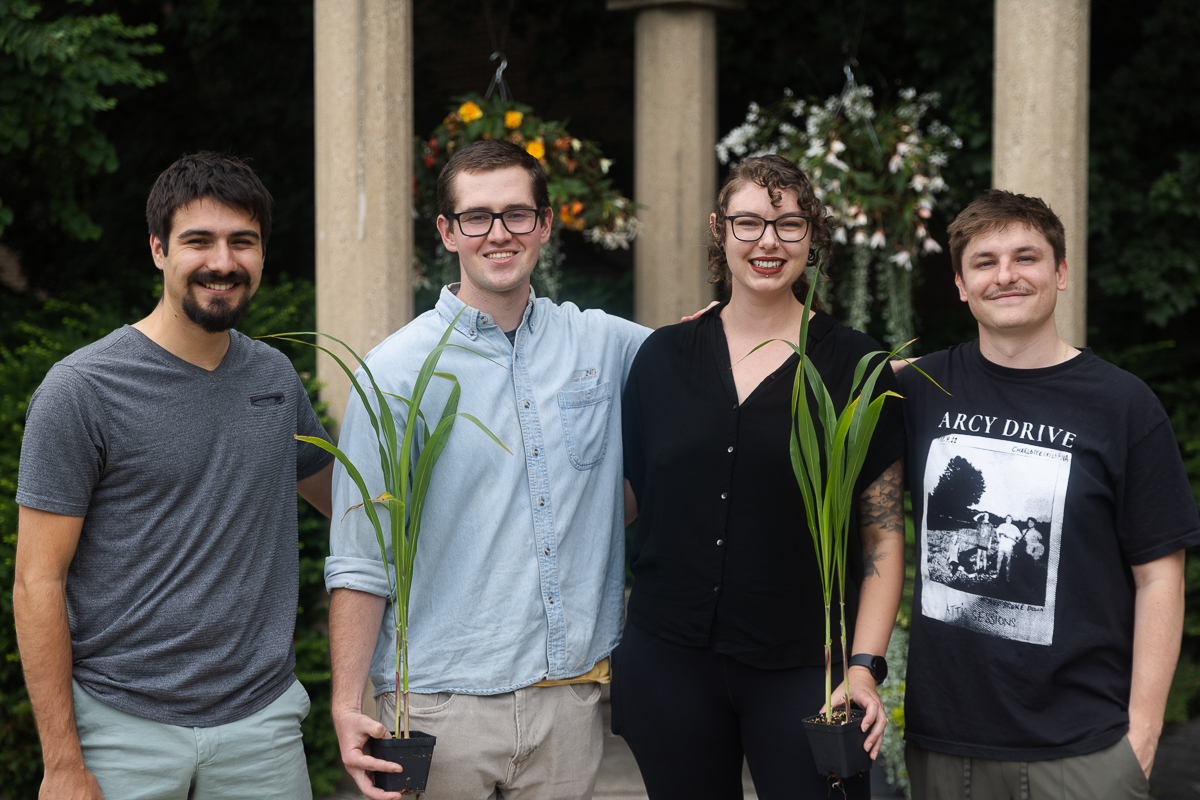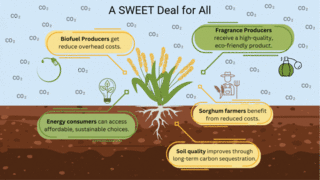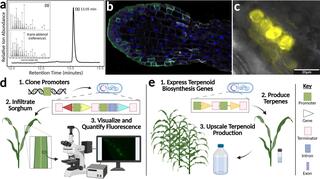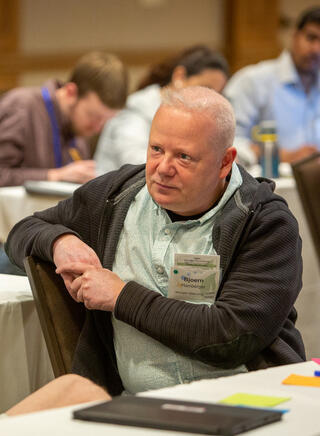
What started as a last-minute contest entry for a group of Michigan State University students has resulted in a journal publication and a better understanding of how to translate science into marketable solutions to real-world problems.
Their idea, detailed in the journal Biotechnology Letters, uses machine learning and genetic engineering to turn a fast-growing and hardy grass used to make biofuels into a living factory for valuable chemicals, creating a clean, profitable, and home-grown energy source.
In 2024, MSU professor Bjoern Hamberger told students in his biotechnology, health and sustainability seminar about a new Department of Energy competition that he had learned about from a colleague in the Great Lakes Bioenergy Research Center (GLBRC), a federal research hub based at the University of Wisconsin–Madison in partnership with MSU and other universities.
Launched in 2023, the EnergyTech University Prize aims to cultivate entrepreneurship and commercialize innovations by offering cash prizes to student teams who present business plans that leverage high-potential energy technologies.
To Hamberger’s surprise, a group of students approached him after class and said they were interested.

The contest required them to develop a business plan leveraging an emerging energy technology, a task well outside the scope of the science-based course.
With less than two weeks to put together a 200-word pitch, the students decided to base their venture on graduate student Angel Indibi’s research on sorghum.
A staple grain domesticated more than 5,000 years ago in Sub-Saharan Africa, sorghum is now being studied as a promising bioenergy feedstock.
“(Sorghum) is very drought tolerant and it doesn’t need any nutrient inputs,” Indibi said. “So you can grow it on land that you can’t grow corn or other crops on, while also improving the quality of that soil through the root systems.”
Sorghum naturally produces terpenoids, a class of chemicals used in medicines, cosmetics, and fragrances. Indibi, a PhD student in biochemistry and molecular biology, is investigating how to engineer plants that produce different terpenoids and shuttle them into a waxy coating known as the cuticle, which has to be stripped off before the stems can be processed into biofuel.
Not only would this create value from an otherwise wasted part of the plant, it’s much easier to harvest bioproducts from the cuticle than from other parts of the plant.
The team decided to focus on two terpenoids used to make fragrances and flavorings with a combined market value of more than $200 million. Revenue from the high-value terpenoids would offset the cost of making biofuel from the rest of the plant.
To do this, they proposed using grad student Brianna Brown’s work in machine learning to scan the plant’s DNA for specific promoters and regulators, which act like on-off switches and volume controls for genes.
The idea is to home in on genes that are active in the outer cuticle layer but not other parts of the plant to avoid interfering with normal plant growth. Once they know where the right switches are within the genome, researchers would use a special bacterium to introduce genes from other species that produce the target terpenoids.
The next challenge was turning the idea into a viable business plan the team could present to judges.
“It’s very business oriented,” Indibi said of the contest. “They just assume that you know the science.”

With little entrepreneurial experience, students turned to technology transfer experts with MSU’s Innovation Center and GLBRC associate director Yiying Xiong, a civil engineer with a master’s in business administration.
Students also had to do market analysis, which often involved reading financial reports and talking to product manufacturers to understand their needs and constraints.
The team leveraged other experts within the GLBRC to advise them on other practical concerns, like the risks involved with growing genetically-modified crops in the field.
“We do all this transgenic stuff in the lab, but then we don’t know a lot about the regulation,” Indibi said. “And trying to find that information is sometimes kind of difficult.”
They named their venture Sorghum With Enhanced Economic Traits (SWEET) and made it to the regional round of the competition, where they were up against teams that had already secured venture cap funding.
“We saw the competition and we knew that we were in the game (with) some very cool other players," Hamberger said. “That’s when we realized the league that we were in.”

The competition was over, but the students weren’t done. A smaller group decided to turn their efforts into something lasting.
“We were like, all right, well, we can either end it here, or we can probably push just a little bit further to put together a manuscript,” said Mitchell Ticoras, a graduate student in plant biology who served as the team leader. “This isn’t a company we are going to do — at least that’s not the plan right now — but we think there’s value in thinking about your science like this.... Everybody always talks about the value of collaborative science. And this felt like kind of a living, breathing example.”
The experience also provided some lessons in communicating scientific research to wider audiences.
“You don’t really want to include a lot of science, which, as scientists, is very difficult,” Indibi said.
There were challenges even within the team, which brought together researchers from different disciplines.
“You’re so used to talking to the people in your lab or your specific field,” said Ticoras, who hopes to eventually bridge science and policy. “This was probably the first time where we had to tear it all the way down with our expertise to build it back up.”
Luke Sharpe, a second-year PhD student studying biochemistry and molecular biology, said he initially assumed the project would just involve a couple of hours in a Zoom meeting. It turned out to be one of his favorite grad school experiences.
“Taking a technology that’s being developed ... and to take it all the way through the steps that would be required to actually commercialize it — to make it a viable product ... that was really invaluable,” Sharpe said. “And it’s kind of shifted how I’ve begun to think about my own work and translational science as a whole.”